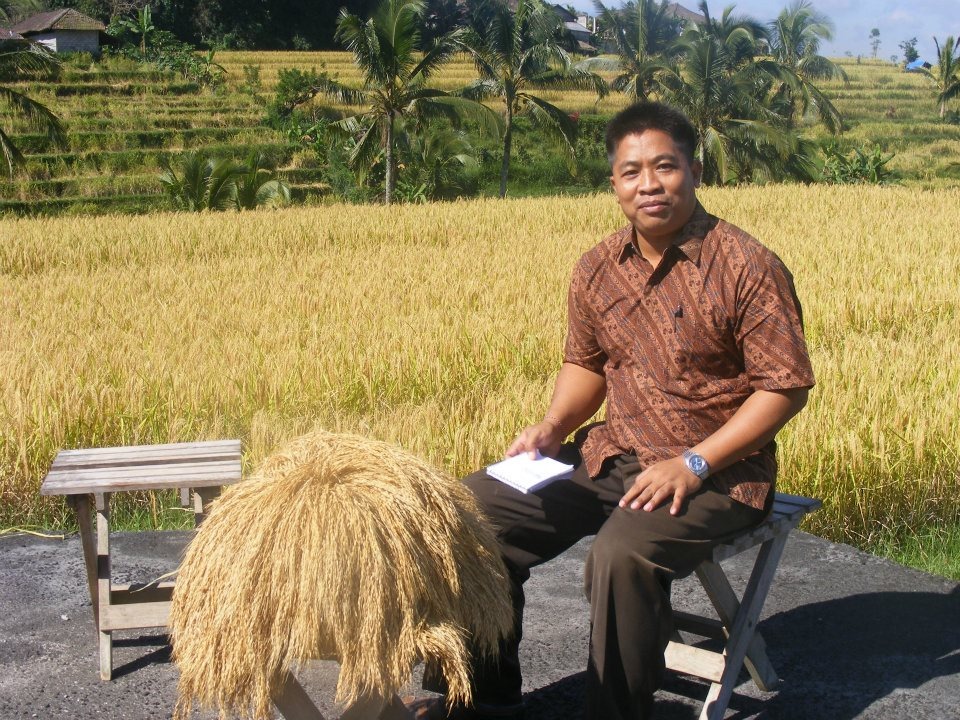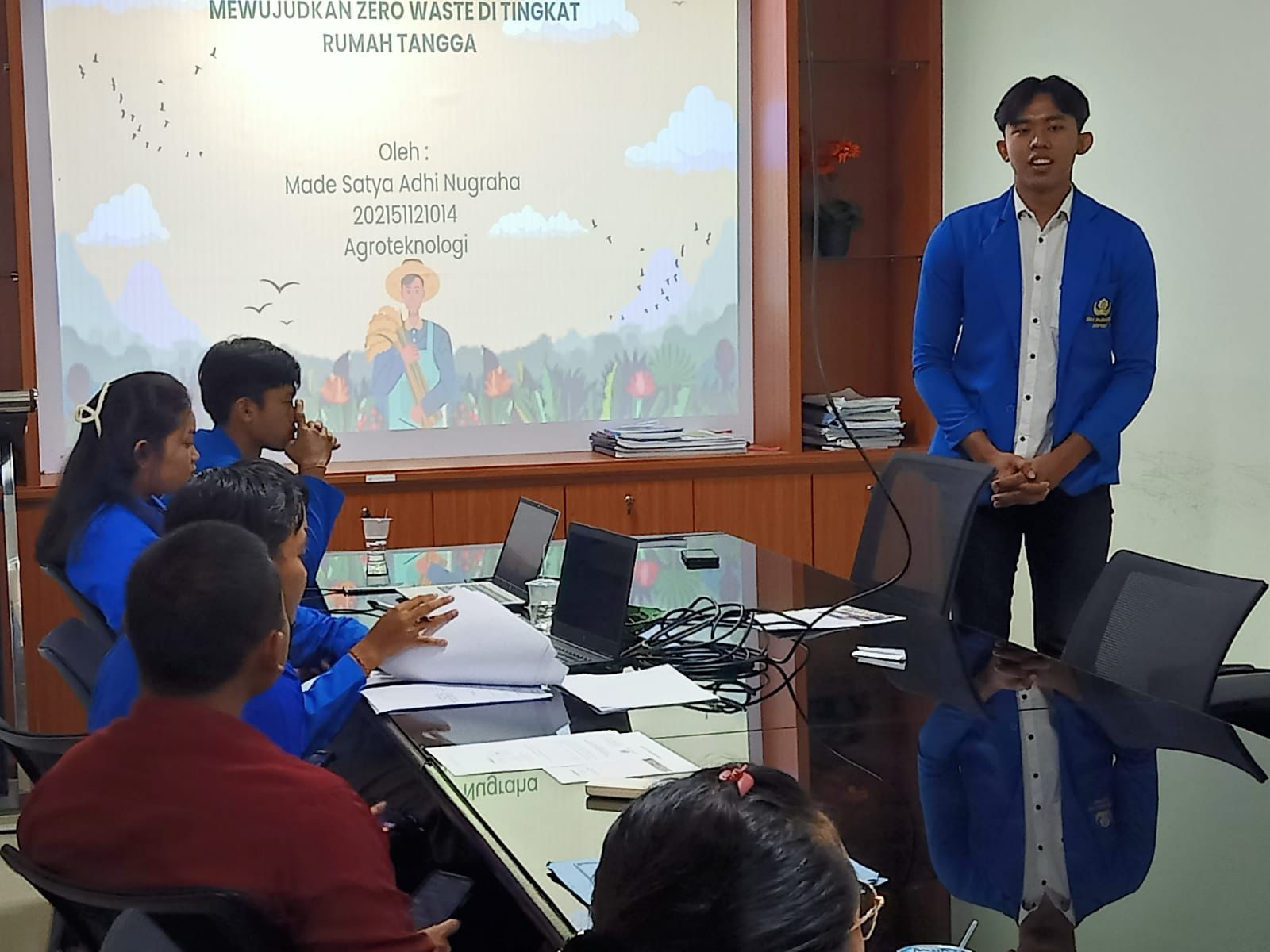
Global warming is a real threat along with the increase of greenhouse gases, especially in the atmosphere. The three main types of gases called greenhouse gases (GHG) are CO2, CH4, and N2O, because they are considered as a layer of gas that acts as a trap for heat waves and recently their concentration in the atmosphere has continued to increase.
The impact of global warming has caused great damage to the Earth’s environment. Global warming triggers climate change that has a wide impact on all sectors of human life, including food security. There is a reciprocal relationship between climate change and food security, where on the one hand, climate change affects all dimensions of food security and, on the other hand, efforts to maintain food security have implications for climate change. Agriculture, including crop and livestock cultivation, can contribute to global warming in several ways.
The contribution of greenhouse gas emissions from the agricultural sector to global warming varies depending on the location and type of agricultural activity. Some data sources estimate that the agricultural sector contributes about 24-25% of greenhouse gas emissions globally. Plowing, fertilization, irrigation, biomass burning, and crop residue disposal can contribute to greenhouse gas emissions. These emissions include carbon dioxide, methane, and nitrous oxide, which are major contributors to global warming.
Mitigation efforts should be made to make food provisioning activities more environmentally friendly. Mitigation measures can include the implementation of sustainable agricultural practices. Sustainable agriculture means agricultural practices that always prioritize ecological concepts, can provide economic improvements, and are adaptive to the culture of the community or in this case farmers.
Several soil management practice activities in agriculture can contribute to the release of CO2 into the atmosphere. Tillage practices affect soil physical properties and the greenhouse gas balance. If farmers can keep carbon in the soil, they will be able to reduce carbon dioxide emissions on farms.
An article titled To what extent can zero tillage lead to a reduction in greenhouse gas emissions from temperate soils?” published in Scientific Reports in 2014 states that the net global warming potential is much higher in conventional tillage systems, reaching 26 – 31% higher than no-tillage systems. No-tillage farming strategies can play an important role in minimizing GHG emissions from soils and contributing to climate change mitigation efforts. Minimum tillage practices on the other hand are reported to reduce GHG emissions by reducing fossil fuel use in land preparation and by increasing carbon sequestration in the soil.
The use of biochar can be a strategy in helping to reduce CO2 emissions in agriculture. Biochar is a carbon-rich material produced through a simple low-temperature pyrolysis process between 100-300 0C. Biochar is a chain of carbon bonds made from biomass. According to several studies, biochar can reduce the rate of carbon emissions while reducing pollutant parameters in soil and water. The excellent ability of biochar to reduce the rate of carbon emissions is due to biochar having a very stable carbon chain, this condition causes biochar to be able to hold more carbon even in extreme weather conditions.
Irrigation of agricultural land, especially in rice cultivation, is one of the activities that contributes to the release of greenhouse gas emissions into the atmosphere. Irrigation contributes to greenhouse gases because water management affects soil microbial activity and substrate supply. An article titled Irrigation and Greenhouse Gas Emissions: A Review of Field-Based Studies published in the journal Soil Systems in 2020 states that in general, CO2 emissions increase and CH4 emissions decrease when irrigation reductions are applied to agricultural land, while N2O emission levels vary widely between irrigation treatments. Therefore, emission reductions through effective water management and irrigation can aim to reduce GHG emissions globally.
The application of intermittent irrigation is said to provide real effectiveness in efforts to reduce greenhouse gas emissions compared to inundation irrigation. Chusnul Arif and colleagues in an article entitled “System Of Rice Intensification: An Alternative Mitigation Strategy To Greenhouse Gas Emissions From Paddy Fields In Indonesia” mentioned the application of intermittent irrigation is effective levels in minimizing global warming potential at various up to 46.4% depending on field conditions. Intermittent irrigation is an important option in mitigating CH4 emissions from paddy fields.
According to Guangbin Zhang, in an article entitled “Intermittent irrigation changes production, oxidation, and emission of CH4 in paddy fields determined with stable carbon isotope technique” published in the journal Soil Biology & Biochemistry in 2012, the application of intermittent irrigation can reduce seasonality CH4 emissions from paddy fields by 71%, compared to submerged or continuous irrigation. Taking into account various research results, the selection of intermittent irrigation techniques can be a way to mitigate global warming from the agricultural sector.
Fertilization activities also contribute to increased greenhouse gas emissions, so strategies in fertilization and fertilizer selection can be an effort to mitigate global warming. Inorganic fertilizers contain nitrogen, which is needed by plants for growth, but not all nitrogen is absorbed by plants. Nitrogen that is not absorbed will be broken down by microbes or carried away by water flow. Nitrogen that binds with oxygen then forms nitrous oxide. The production of inorganic fertilizers on the other hand triggers global warming because the production process produces carbon dioxide (CO2). This means that the higher the amount of inorganic fertilizer used, the more CO2 gas produced.
The use of organic fertilizers can be a way to reduce the use of inorganic fertilizers. Reducing the use of inorganic fertilizers can be done by combining them with organic fertilizers gradually. The combination of fertilizers can be done by starting to reduce the use of inorganic fertilizers from 20% until later it can reach 100% organic fertilizer. The combination of organic- and organic fertilizers is important to avoid a decline in production.
The use of organic fertilizers is a strategy for maintaining agro-ecological health to improve soil health, reduce environmental burdens, and improve crop quality and production. This approach, on the other hand, is a step in mitigating climate change. Jay Squalli and Gary Adamkiewicz, in an article entitled “Organic farming and greenhouse gas emissions: A longitudinal US state-level study” published in 2018 in the Journal of Cleaner Production estimated that a one percent increase in organic acreage could reduce greenhouse gas emissions by 0.049%.
Agricultural waste management is one of the important strategies in mitigating global warming. The practice in the field so far, both crop residues and livestock manure tend to be discarded, piled up, or burned, contributing to greenhouse gas emissions. One example is the burning of rice straw waste by farmers after harvest. Generally, farmers tend to burn rice straw to speed up land clearing to catch up with the next planting period.
Another reason is that burning rice straw is done because based on the knowledge they get from generation to generation, burning is the fastest and simplest way to return agricultural waste to the soil. Many national and international organizations have called for an open ban on rice straw burning to prevent biomass loss and reduce CO2 emissions. On average, rice straw waste production reaches 10-15 tons/ha, and 1 ton of rice straw when composted can produce 0.3-0.5 tons of compost.
Subodh Kumar and team in an article entitled “Strategies for boosting biomethane production from rice straw: A systematic review” published in 2021 in the journal Bioresource Technology Reports explained that burning 1 ton of rice straw produces 1460.00 kg CO2, 34.70 kg CO, 3.10 kg NOx, 2.00 kg SO2 and 1.20 kg CH4. In contrast, when 1 ton of straw undergoes anaerobic decomposition, it will produce 2.05 kg CO2 (carbon dioxide), 0.67 kg CO (carbon monoxide), 0.01 kg H2S (hydrogen sulfide), 0.04 kg NOx (oxides of nitrogen) and 1.07 kg CH4 (methane). According to VH Nguyen, in his article entitled “Generating a positive energy balance from using rice straw for anaerobic digestion” published in 2016 in the journal Energy Reports, rice straw waste can be processed into biogas and produce net energy of up to 3,500 MJ per tons. This means that efforts to process agricultural waste contribute to reducing greenhouse gas emissions and provide added value in the form of clean energy or other benefits.
The implementation of integrated farming can be another alternative to global warming mitigation efforts in the agricultural sector. Farmers use livestock manure as organic fertilizer for their crops, while agricultural waste is used by livestock as animal feed. Economically, agricultural waste and livestock manure will be able to reduce the production costs of these agricultural and livestock activities in the form of animal feed and organic fertilizer that are utilized, thereby increasing the income of these farmers.








 Users Today : 4
Users Today : 4 Total Users : 8307
Total Users : 8307 Views Today : 11
Views Today : 11 Total views : 20858
Total views : 20858
0 Komentar